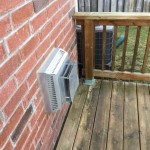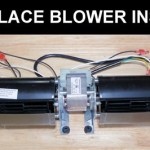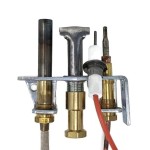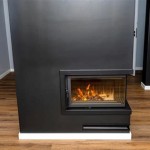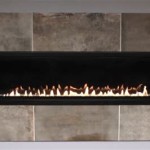Understanding and Optimizing Your Fasco Fireplace Blower
Fireplaces offer a comforting source of heat and ambiance, particularly during colder months. However, traditional fireplaces are often inefficient at distributing heat throughout a living space. A significant portion of the generated heat can escape up the chimney, leaving the room feeling cool despite the presence of a roaring fire. This is where a Fasco fireplace blower becomes a valuable asset. Fasco, a well-known manufacturer of motors and blowers, provides effective solutions for improving fireplace efficiency and heat distribution.
A fireplace blower, also referred to as a fireplace fan, is a device designed to circulate the warm air produced by a fire into the surrounding room. It operates by drawing cooler air from near the floor, passing it over the heated firebox or fireback, and then expelling the warmed air back into the room. This process significantly enhances the convective heat transfer, making the fireplace a more effective heating appliance. Fasco fireplace blowers are specifically engineered to withstand the high temperatures associated with fireplace environments while operating quietly and efficiently.
Understanding the benefits, selection criteria, and maintenance requirements of a Fasco fireplace blower is crucial for homeowners seeking to optimize their fireplace's performance. This article aims to provide a comprehensive overview of Fasco fireplace blowers, covering their advantages, types, installation considerations, troubleshooting tips, and maintenance procedures.
Key Advantages of Using a Fasco Fireplace Blower
One of the primary advantages of utilizing a Fasco fireplace blower is the substantial improvement in heating efficiency. Without a blower, much of the heat generated by the fire radiates directly upward and out of the chimney. The blower forces air across the heated surfaces, capturing this otherwise lost heat and distributing it into the room. This can result in a significant increase in the amount of usable heat available, reducing the need for supplemental heating sources and potentially lowering energy bills.
Improved heat distribution is another significant benefit. Traditional fireplaces tend to create uneven heating within a room, with areas closest to the fireplace feeling warmer than those farther away. A Fasco fireplace blower helps to circulate the warm air throughout the entire room, creating a more consistent and comfortable temperature. This is particularly beneficial in larger rooms or open-concept living spaces where maintaining a uniform temperature can be challenging.
Furthermore, a Fasco fireplace blower can contribute to reduced energy consumption. By improving the efficiency of the fireplace, the blower reduces the reliance on other heating systems, such as furnaces or electric heaters. This reduced reliance on other energy sources can lead to lower energy bills and a smaller carbon footprint. The blower itself consumes a relatively small amount of electricity, making it a cost-effective solution for enhancing fireplace performance.
Selecting the Right Fasco Fireplace Blower
Choosing the appropriate Fasco fireplace blower requires careful consideration of several factors, including the size and type of fireplace, the blower's CFM (cubic feet per minute) rating, and the noise level. The physical dimensions of the fireplace opening are critical, as the blower must fit properly within the available space. Measure the width, height, and depth of the firebox or the area where the blower will be installed to ensure a proper fit. Consult the Fasco product specifications to confirm compatibility.
The CFM rating of the blower indicates the volume of air it can move per minute. A higher CFM rating generally translates to greater airflow and more effective heat distribution. However, selecting a blower with an excessively high CFM rating for a smaller fireplace can result in noisy operation and inefficient energy use. Consult the manufacturer's recommendations or a qualified HVAC professional to determine the appropriate CFM rating for your specific fireplace size.
Noise level is also an important consideration, particularly for those who value a quiet and relaxing atmosphere while enjoying their fireplace. Fasco fireplace blowers are generally designed to operate quietly, but some models may produce more noise than others. Look for models with noise ratings expressed in decibels (dB). Lower decibel ratings indicate quieter operation. Consider reading online reviews or consulting with a retailer to obtain feedback on the noise levels of different Fasco blower models.
The type of fireplace (e.g., wood-burning, gas, or electric) also influences the selection of a suitable blower. Some blowers are specifically designed for use with certain types of fireplaces, while others are more versatile. Verify that the selected Fasco blower is compatible with your specific fireplace type before making a purchase. For example, gas fireplaces may require blowers with specific safety features or certifications.
Installation and Maintenance of Fasco Fireplace Blowers
Installation of a Fasco fireplace blower typically involves connecting the blower to a power source and positioning it within the fireplace firebox or designated blower compartment. Safety is paramount during installation. Always disconnect the power supply to the fireplace before beginning any installation or maintenance work. Follow the manufacturer's instructions carefully and use appropriate tools and safety equipment.
Many Fasco fireplace blowers are designed for DIY installation, but professional installation is recommended if you are not comfortable working with electrical components or if your fireplace requires modifications. A qualified technician can ensure that the blower is properly installed and wired, and that all safety precautions are followed. Incorrect installation can lead to electrical hazards or damage to the blower or fireplace.
Regular maintenance is essential for ensuring the long-term performance and reliability of your Fasco fireplace blower. The most common maintenance task is cleaning the blower to remove dust, dirt, and debris that can accumulate over time. Accumulated debris can reduce airflow and cause the blower to overheat. Disconnect the power supply and use a vacuum cleaner or compressed air to clean the blower blades and motor housing. Avoid using water or other liquids to clean the blower.
Periodically inspect the blower's wiring and connections for any signs of damage or wear. Replace any worn or damaged wires to prevent electrical hazards. Check the blower's motor for unusual noises or vibrations, which may indicate a problem with the motor bearings. If you notice any unusual symptoms, consult a qualified technician for diagnosis and repair. Avoid attempting to repair the blower yourself unless you have the necessary expertise and tools.
In addition to regular cleaning and inspection, consider lubricating the blower's motor bearings periodically. Use a lubricant specifically designed for electric motors. Follow the manufacturer's instructions for lubrication frequency and application. Proper lubrication can help to extend the life of the motor and ensure smooth and quiet operation.
Proper ventilation around the fireplace is also crucial for optimal blower performance. Ensure that the fireplace area is free from obstructions that could restrict airflow. Clear any debris or objects that may be blocking the air intake or exhaust vents. Adequate ventilation will help to prevent overheating and ensure efficient heat distribution.
When not in use for extended periods, consider removing the blower from the fireplace to protect it from dust, moisture, and other environmental factors. Store the blower in a clean, dry place. This will help to prolong its lifespan and ensure that it is ready for use when needed.
Addressing common problems such as a noisy blower, reduced airflow or no airflow are important for maintaining the performance of the Fasco fireplace blower. A noisy blower can be caused by loose mounting screws, debris in the blower blades, or worn motor bearings. Tighten the mounting screws, clean the blower blades, or lubricate the motor bearings to address these issues. If the noise persists, consult a qualified technician.
Reduced airflow can be caused by a clogged air filter, a blocked air intake or exhaust vent, or a failing motor. Clean or replace the air filter, clear any obstructions from the air vents, and check the motor for proper operation. If the motor is not functioning correctly, it may need to be replaced.
If the blower is not working at all, check the power supply and the blower's wiring and connections. Ensure that the blower is receiving power and that all wires are properly connected. If the power supply and wiring are intact, the motor may be defective and require replacement. Consulting the manufacturer’s product guide and having a multi-meter device can aid in ensuring proper power is delivered.
By understanding the advantages of using a Fasco fireplace blower, selecting the right model for your needs, and following proper installation and maintenance procedures, homeowners can significantly improve the efficiency and comfort of their fireplaces. A well-maintained Fasco fireplace blower can provide years of reliable service, helping to keep your home warm and cozy throughout the winter months.

Heat N Glow Fireplace Blower 7002 1241 115v Fasco A133

Centrifugal Motors Fasco 1c265

Stove Blower Motor 115v 20533 Fasco A212

Stove Blower Motor Rpm 2730 12183 Fasco 7002 1329

Fireplaceblowers Fireplace Blower Kit Accesories

Fireplace Stove Blower Motor Replacement For Dayton 1tdr9 Fasco B45267 Com

Fasco A120 Rectangular Oem Blower 3000 Rpm 1 Phase Direct Steel 2 Sd

Hongso Pre Wired Gfk 160 160a Fireplace Blower Fan Kit With Ball Bearings Motor For Heat N Glo Hearth And Home Quadra Fire Gti Fasco Regency Wood Stove Insert Royal Jakel Nordica Rotom

Silent Flame 3 Sd Motor Sf782024

Dual Centrifugal Blower Fire Parts Com
Related Posts

